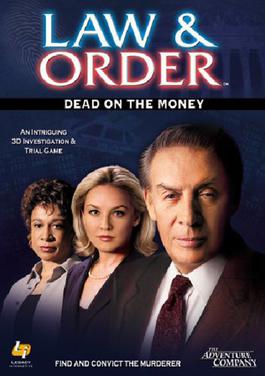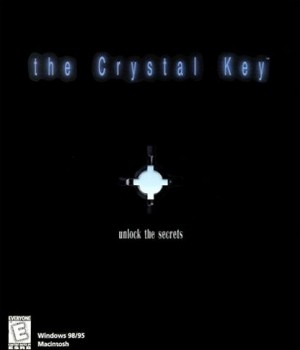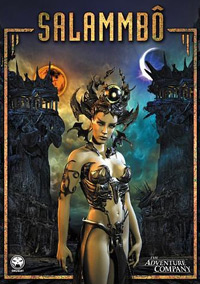
Escape from Monkey Island is an adventure game developed and released by LucasArts in 2000. It is the fourth game in the Monkey Island series, and the sequel to the 1997 videogame The Curse of Monkey Island. It is the first game in the series to use 3D graphics and the second game to use the GrimE engine, which was upgraded from its first use in Grim Fandango.

The Longest Journey is a magical realist point-and-click adventure video game developed by Norwegian studio Funcom for Microsoft Windows and released in 1999.

Cryo Interactive Entertainment was a French video game development and publishing company founded in 1990, but existing unofficially since 1989 as a developer group under the name Cryo.

DreamCatcher Interactive Inc. was a Canadian video game publisher founded in 1996 by Richard Wah Kan. It was best known for its adventure games. In 2006, the company became a subsidiary of JoWooD Entertainment. In 2011, the company went into administration along with its parent JoWooD and all assets were purchased by Nordic Games Holding. The DreamCatcher Interactive brand is currently being used as a publishing label for THQ Nordic.

Law & Order: Dead on the Money is the first in a series of video games based on the television series Law & Order. The game was developed by Legacy Interactive and was first published in September 2002.

Treasure in the Royal Tower is the fourth installment in the Nancy Drew point-and-click adventure game series by Her Interactive. The game is available for play on Microsoft Windows platforms. It has an ESRB rating of E for moments of mild violence and peril. Players take on the first-person view of fictional amateur sleuth Nancy Drew and must solve the mystery through interrogation of suspects, solving puzzles, and discovering clues. There are two levels of gameplay, Junior and Senior detective modes, each offering a different difficulty level of puzzles and hints, however neither of these changes affect the actual plot of the game. The game was loosely based on a book titled The Treasure in the Royal Tower (1995).

Atlantis: The Lost Tales is a 1997 fantasy adventure video game developed and published by Cryo Interactive Entertainment. Interplay Productions published the game in North America, where it released on September 30, 1997. The game is named after its initial and most important setting, Atlantis. It is the first in a Myst-like series, and was followed by Atlantis II, Atlantis III: The New World, Atlantis Evolution and The Secrets of Atlantis: The Sacred Legacy.

Message in a Haunted Mansion is the third installment in the Nancy Drew point-and-click adventure game series by Her Interactive. The game is available for play on Microsoft Windows platforms as well as Game Boy Advance. It has an ESRB rating of E for moments of mild violence and peril. Players take on the first-person view of fictional amateur sleuth Nancy Drew and must solve the mystery through interrogation of suspects, solving puzzles, and discovering clues. There are two levels of gameplay: Junior and Senior detective modes. Each mode offers a different difficulty level of puzzles and hints, but none of these changes affect the actual plot of the game. The game is loosely based on a book entitled The Message in the Haunted Mansion (1995).

The Omega Stone is a Microsoft Windows puzzle adventure game developed by American studio Omni World Studios. It was the sequel to the game Riddle of the Sphinx: An Egyptian Adventure and was released by DreamCatcher Interactive on March 18, 2003.

Atlantis III: The New World,, is a 2001 fantasy adventure video game developed and published by Cryo Interactive, with Dreamcatcher Interactive publishing the game in North America. David Rhodes composed the musical score. It is the third game in the Atlantis series by Cryo, as well as the last one made before Cryo's closure. It was followed by Atlantis Evolution in 2004.

Atlantis Evolution is a 2004 graphic adventure game developed by French studio Atlantis Interactive Entertainment and published by The Adventure Company. It is the fourth in the Atlantis series by Cryo, and the first one made by Atlantis Interactive Entertainment, founded by former Cryo developers. Unlike the second and the third game in the series, the game revolves entirely around Atlantis. It was followed by The Secrets of Atlantis: The Sacred Legacy in 2006.

Kheops Studio was an independent video game development studio created in September 2003. Its games were published by Microïds, which acquired the brand and intellectual property as insolvency assets of Cryo Interactive in 2002. The company was co-founded by Benoît Hozjan, who also served as the creative director for the studio and Stéphane Petit, who served as technical director. Kheops developed adventure games for the PC platform and released several major successful games. The studio is best known for creating games that have been described by the developer as "cultural entertainment", that is, games which are heavily drawn from historical or literary sources to include a mixture of history and fiction. After filing for bankruptcy, the studio was closed down in January 2012.

The Crystal Key is a 1999 graphic adventure video game developed by Earthlight Productions and published by DreamCatcher Interactive. A work of science fiction, it casts the player as an interstellar explorer on a quest to save Earth from Ozgar, a malevolent alien conqueror. The player uses portals to traverse multiple planets, including desert and jungle worlds, while collecting items and solving puzzles. The Crystal Key was conceived by John and Jennifer Matheson in the mid-1990s, and it underwent a five-year creation process hampered by problems with its technology. It was signed by DreamCatcher as part of the publisher's strategic push into the adventure game genre.

Egypt 2: The Heliopolis Prophecy is an adventure video game developed and published by Cryo Interactive for the PC and PlayStation in 2000. It was released for Mac OS X in May 2012. Egypt 2 follows Egypt 1156 B.C. and is followed by Egypt III.

The New Adventures of the Time Machine is an adventure video game released in 2000, developed and published by Cryo Interactive. It is based on H. G. Wells' novella The Time Machine.

Salammbo: Battle for Carthage is a first-person perspective adventure video game. It began development at Cryo Interactive, but the company went bankrupt during production. The Salammbo team was ultimately acquired by DreamCatcher Interactive, which finished the game's development.

Faust, known as Seven Games of the Soul in North America, is 1999 graphic adventure game created by Arxel Tribe, Anne Carrière Multimedia and Cryo Interactive. Loosely inspired by Goethe's Faust, it tells the story of Marcellus Faust and his battle of wills with the demon Mephistopheles.

Riddle of the Sphinx: An Egyptian Adventure is a 2000 graphic adventure game developed by Old World Studios and published by DreamCatcher Interactive. It received a sequel, entitled The Omega Stone: Riddle of the Sphinx II, in 2003. A remastered version, Riddle of the Sphinx: Awakening, was released in 2021.

Cydonia: Mars - The First Manned Mission is a 1998 adventure video game, and the premiere title for developer Aneiva Interactive.

Traitors Gate is a 1999 graphic adventure game developed by Daydream Software. Set in a reproduction of the Tower of London, it follows the story of Raven, an American special agent trying to steal and replace the Crown Jewels of England to safeguard them from a rogue operative. The player assumes the role of Raven and solves puzzles within the Tower while evading the guards. Progression through the game is nonlinear and under a time limit: the player may solve certain challenges in multiple ways, but must win before 12 hours elapse.




















